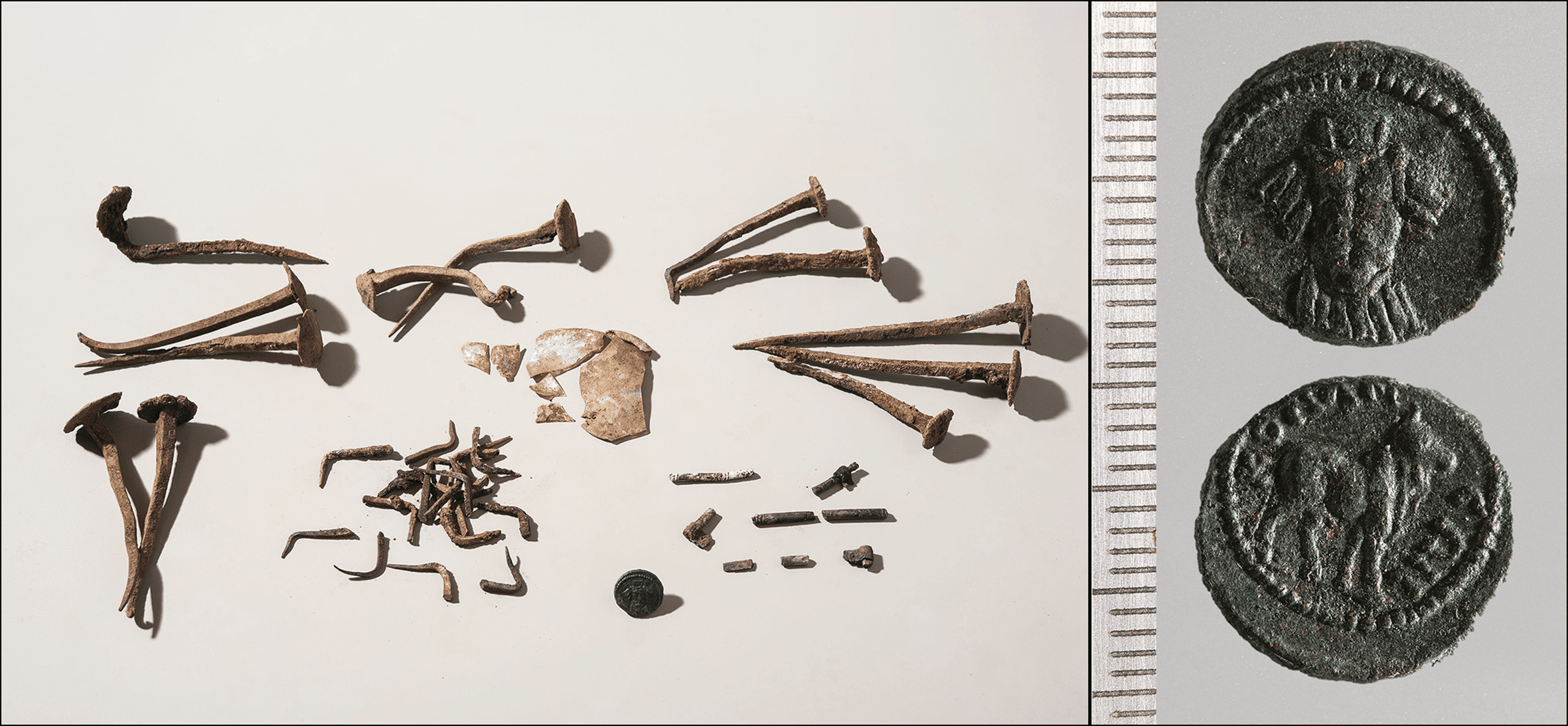Long before things like germ theory or antibiotics were properly understood, it’s no surprise that ancient peoples had some pretty… inventive ways to keep themselves safe and healthy.
We’re not going to sugar-coat it: our ancestors were big into magic. Tattoos to protect women in childbirth, curse tablets, love spells – you name it, there was probably some disgusting recipe out there for a spell that could make it happen.
But a new report, from archaeologists working in the south-west of Turkey, has revealed an example of this ancient mysticism that’s pretty weird even for our cast-happy great-grandparents.
“Occasionally, the archaeological record allows us a glimpse beyond the mere material and into the mindset of people in the past,” the authors of the new paper explain. “A cremation burial from the eastern necropolis of Sagalassos, south-west Turkey, provides one such opportunity, documenting funerary practices that clearly deviate from other contemporaneous burials at the site.”
There have been thousands of ancient Roman burials excavated over the years – of which this is one, likely dating from the early imperial period of between about 25 BCE and 100 CE – and with that vast number comes a wide range of funerary practices and rites. But this grave stands out: the cremated remains were buried rather than retrieved to be placed in a secondary location; they were surrounded with grave goods including intentionally bent nails; and finally, they were sealed into the earth beneath a covering of brick and lime.
None of these practices would necessarily be unusual on their own – but together, they make the grave particularly unusual, the researchers write.
“Following cremation, we observe a series of atypical interventions,” the paper explains. “The deposition of nails appears to form a magical barrier surrounding the remains of the funeral pyre. The conversion of the pyre site in the burial place, and the use of a brick/lime covering are also unique among the funerary practices at Sagalassos.”
But why would this grave in particular have warranted such peculiar treatment? According to the researchers, it might be an ancient form of that most badass of occupations: vampire hunting.
Well, kind of, at least. “The combination of nails and bricks designed to restrain the dead with the sealing effect of the lime strongly implies a fear of the restless dead,” they explain. “Regardless of whether the cause of death was traumatic, mysterious or potentially the result of a contagious illness or punishment, it appears to have left the dead intent on retaliation and the living fearful of the deceased’s return.”
See, nails – whether real, imitation, or even bent and broken – were a common feature in ancient Roman graves, and usually for one of two reasons: either these functionally useless items were buried alongside the deceased to protect them in the afterlife – or else they were placed there to stop someone from coming back.
“These interpretations are not mutually exclusive,” the authors point out; “in both cases, nails are considered to possess the apotropaic power to protect the subject – be it the living, the dead, or both – from harm.”
And if you’re trying to keep the dead down, why stop at nails? Other excavations have found graves with heavy weights around the deceased, as well as curses to make “the earth rest heavily upon you”; still more have revealed graves in which the deceased has been decapitated, bound, or buried face down, all in an attempt to stop vengeful spirits from harming the living.
And with that in mind, the thick layer of tile and lime covering the grave becomes more noteworthy. “There is no indication that lime was used in an aesthetic manner, or to preserve the physical integrity of the remains,” the researchers write. “It seems probable that this use of lime was an additional intervention aimed at protecting the living from the possible malevolent effects of this particular funerary context.”
“It is the combined practices… within their specific historical and regional setting, that narrow down the possible interpretations,” they add. “Regardless of whether the cause of death was traumatic, mysterious or potentially the result of a contagious illness or punishment, it appears to have left the dead intent on retaliation and the living fearful of the deceased’s return.”
So, is this the grave of Ancient Turkey’s answer to Count Dracula? Who knows – but the researchers hope that the sheer uniqueness of this bizarre and fearful burial might help break down some of the resistance towards the idea of magical beliefs in the archaeological community.
“We hope this example will contribute to the ongoing study of the materiality of magic, as well as the meaning of non-normative burials,” they write. “A strictly binary approach (normative vs non-normative) can impede an objective discussion… Extraordinary contexts, such as the cremation burial from Site F, have the potential to provide insight into the belief structures of past societies that may complement or confront our established views of the Roman past.”
The report can be found in the journal Antiquity.
Source Link: Ancient Romans Used "Magic" To Keep Restless Spirits Down, Bizarre Grave Suggests
